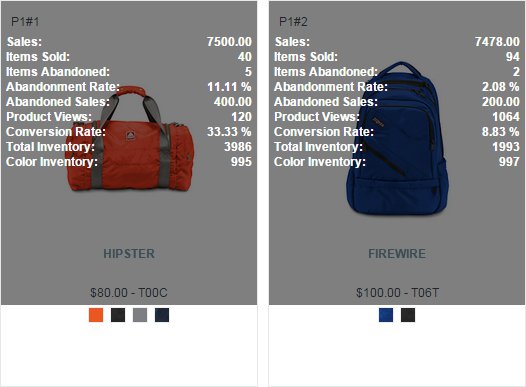Imagine you’re selling smartwatches in your eCommerce store. While you believe they’re very popular among Gen Z, how do you know your marketing campaign is working? Is your product messaging right? What’s your cost per conversion? Detailed product analytics can give you the answers.
Your customers generate data with every interaction in your store, but the amount of information you get can be overwhelming. Effective product analytics harness these insights and turn them into an engine for your online business. You can then optimize offerings, operations, and strategies without drowning in a sea of data.
Why Product Analytics Matter
Companies that use analytics outperform their competitors in terms of profit almost twice as often. That’s because product analytics inform businesses about their users–their preferences and requirements–and how to retain them. As a result, you can extract detailed customer insights to make data-driven decisions.

Product analytics help you understand your customers better. By tracking metrics such as customer demographics, browsing patterns, and purchase history, you can identify the customer lifetime value (CLV). You can also set parameters to track user journeys and uncover their pain points. This will help your business streamline the checkout process and reduce its churn rate.
What’s more, product analytics help optimize your marketing campaigns:
- Track the return on investment (ROI) of your advertising efforts.
- Understand which channels are driving the most traffic and conversions.
- Allocate your marketing budget more efficiently.
Setting up product analytics can help you directly improve your revenue, reduce costs, and implement omnichannel growth strategies. It also becomes easier to differentiate between high and low-performing products so you can optimize accordingly. Finally, you can build bespoke strategies for products and address the performance gaps with campaign boosts, feature additions, and design changes.
How to Gain a Competitive Edge With Product Analytics
Data is everywhere, and it’s beneficial to every business. But it takes the right approach to leverage this data and turn it into useful information.
To gain a competitive edge, begin by planning how you’ll implement product analytics. Specifically, you need to decide:
- Which data sources you’ll extract information from
- What products to track

Implementing product analytics must begin after the product has reached a minimum number of customers. Too small of a customer base won’t give you enough context to find meaningful information.
Once you reach the required number of customers, start associating the data with your business goals. Be as specific as possible. Then, create a plan to track every decided goal by breaking down the tracking data into small units or events. Every event is a user's action around a product–searching for it, adding it to their cart, etc.
Lastly, you need to choose the best tool for data tracking. An analytics overlay tool can help you optimize your catalog sequencing in real-time based on user behavior.
With Smart Merchandiser, you can extract data from different social media apps and websites. The data can then be viewed on an intuitive user interface. This gives businesses a direct understanding of how each product is performing.
Understanding Customer Behavior
Knowing your customers is the key to building a successful business. For this purpose, eCommerce stores can track a few key performance indicators (KPIs):
- Product views
- Conversion rate
- Abandonment rate
- Time spent by a customer on each product page
- Number of pages a potential customer visits before purchasing
Taking these KPIs into account, it will become easier to determine customers’ likes and dislikes. You can then segment your customers into distinct groups based on their characteristics, behaviors, or preferences.
This has two main benefits:
- Better Targeting: Once you segment your users, you can put product recommendations and marketing messages directly in front of those most likely to respond.
- Personalization: With customer behavior analytics, you can take a personalized approach to make your marketing more relevant and increase conversions. Offer discounts on items in an abandoned cart and send customized emails to remind customers about the items.
Optimizing Product Performance
Through product analytics, you can identify your top-performing items. Specifically, look at the sale amount of each item, the number of items sold, and the sell-through rate, which shows the percentage of items sold compared to the items bought. This data will tell you how to tweak your strategies to achieve your sales goals.

Product analytics can also help you merchandise your store. For instance, if the data tells you that most of your traffic comes from women in their early 20s, you can specifically design your homepage to target this age group.
To collect efficient data, always do an A/B test. Switch design elements like images, call-to-action (CTA) buttons, and the page layout to see what drives sales. As a result, you’ll understand better what your audience likes.
In addition, optimize your category pages. These are often the landing pages for different sets of products. As such, they’re the first interaction a user has with your website. A visually coherent page with a clear product listing will not only create a good first impression, but it will also increase the discoverability of your products. For instance, a collection-based layout makes it easier for customers to engage with your products.
Redefining User Experience Through Product Analytics
User experience is pivotal to your eCommerce business success. After all, memorable user experiences lead to higher revenue. But to improve user experience, you’ll need to leverage data analytics. This helps you break down data into understandable information.
In other words, it turns your customer into a real person. You can then better understand their behavior, interests, buying patterns, and pain points. This lets you tap into the driving force behind their purchases.
With these insights, eCommerce businesses can craft bespoke strategies to address customer needs. This might include drafting personalized retargeting ads, sending newsletters, or offering discounts, referrals, and promotions. It all depends on where the user is in their buying journey.
Personalization also means switching up your store’s aesthetics and navigation. Did you know 79% of customers bounce off to multiple websites when searching for a product? This presents a big opportunity. Their search intent is clear. Now, it’s up to you to make your store visually appealing and easy to navigate so they don’t leave your website.
Overall, your eCommerce store and product design must align with the customer’s preferences. Use product analytics tools to find out what your customers like. Then, deliver what they want for a better response.
Building a Data-Driven eCommerce Future
Data-driven insights are transforming the way businesses operate. For an eCommerce store, data plays a pivotal role in shaping strategies and decisions. In short, it helps you understand your customers like never before.

With these insights, you can identify top-performing products and then experiment with your messaging and design to promote different categories. For instance, online shopping giants leverage artificial intelligence (AI)-driven data analysis to improve customer experiences. They:
- Implement mobile-first indexing
- Use data to build search engine optimization (SEO) strategies
- Focus on comprehensive keyword research
- Publish data-driven SEO content
As a result, these businesses are able to rank higher in the search results. Their products are shown to relevant audiences, and their sales skyrocket.
The Role of Recommendation Engines
Recommendation engines are important for driving cross-selling and upselling opportunities. Customers are more likely to add recommended products to their cart. Machine learning algorithms can track and study consumer buying habits and search patterns. With this data, you can personalize recommendations without spending a dime on advertising.
Many retailers also provide recommendations through the “customers also bought” listing that shows similar products. They might recommend that customers buy a phone cover when purchasing a phone. The key is to suggest complementary products.
Another way to increase average order value is to offer bundles. Think similar or complementary items like a package of coffee grounds with a coffee machine. This enables you to sell more for less.
Data-Driven Merchandising Strategies
When you use data to run an online business, the chances of doing everything right increase. For instance, data can help you optimize product prices and build bespoke promotional campaigns.

First, implement basic segmentation, where customers are categorized into demographics, geography, purchase history, payment mode, devices used for purchases, and language preferences. Then, use heat mapping to better understand customer buying patterns and engagement. This will help you make more effective merchandising decisions.
Using this structured data approach, conduct A/B testing to determine which strategies and plans work. Also, implement product sequencing to ensure that your customers always see the right products. This will improve product discoverability and rank them according to a wide range of factors: conversion rate, margin, reviews, sales, margin, and much more.
Bring Data to Life With Smart Merchandiser
Data is essential for success. With data-driven product analytics solutions, your eCommerce business can build personalized customer experiences and better campaigns, which increase revenue. Using the insights from the analytics tools, you’ll also get insider information about your products and customers.
Smart Merchandiser can help you process this vast data. With our analytics overlay tool, you can see abandonment rates–and abandoned sales dollars. This will help you better design retargeting campaigns.
Our tool helps you improve your site design as well. Use the metrics provided in Smart Merchandiser to quickly determine which products and promotional campaigns are working for the site and which ones aren’t. Then, redesign the layout accordingly.
Manage your visual catalog, inventory, colors, and more with one robust tool. Contact us today to learn how Smart Merchandiser can help turbocharge your eCommerce business.



